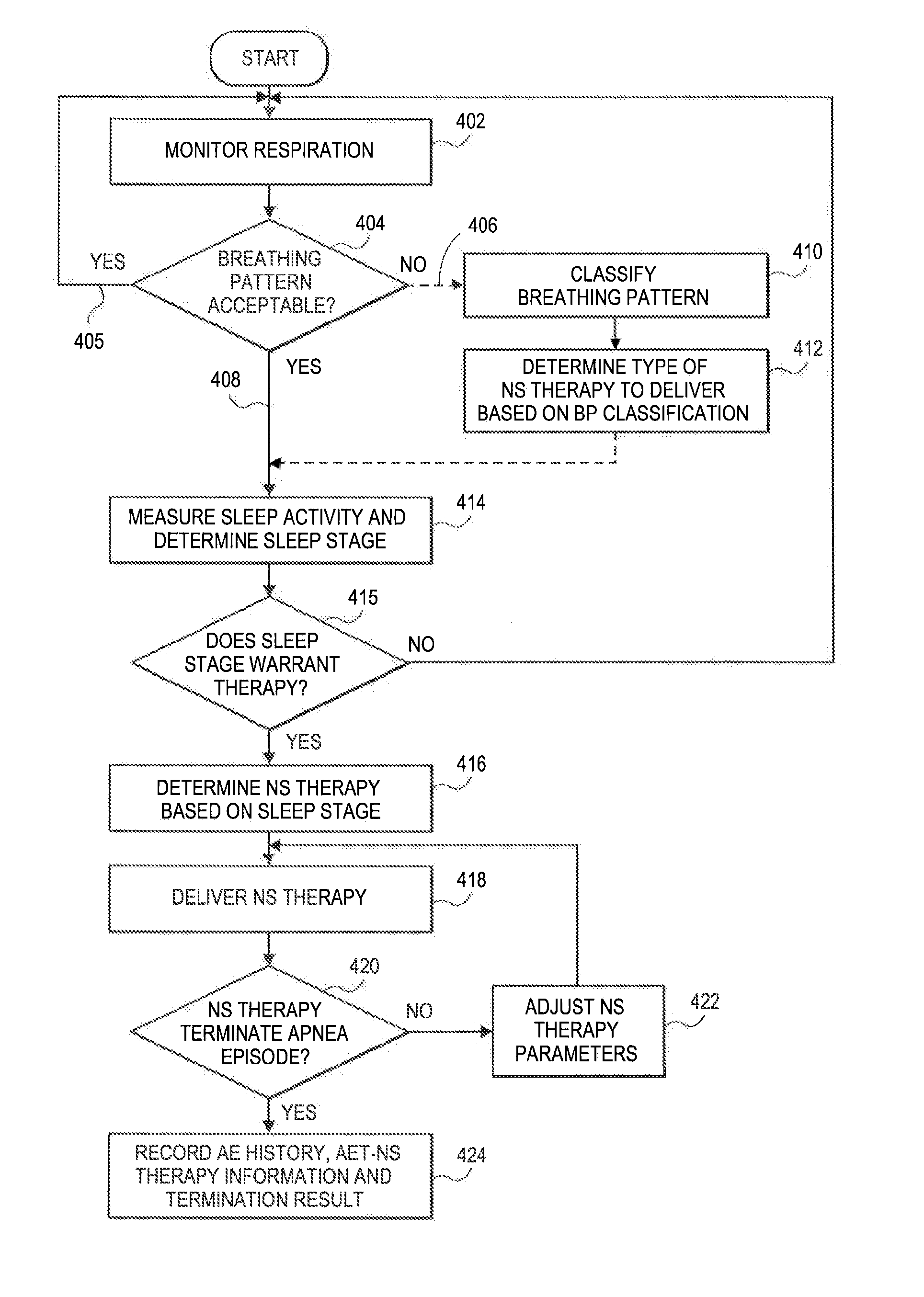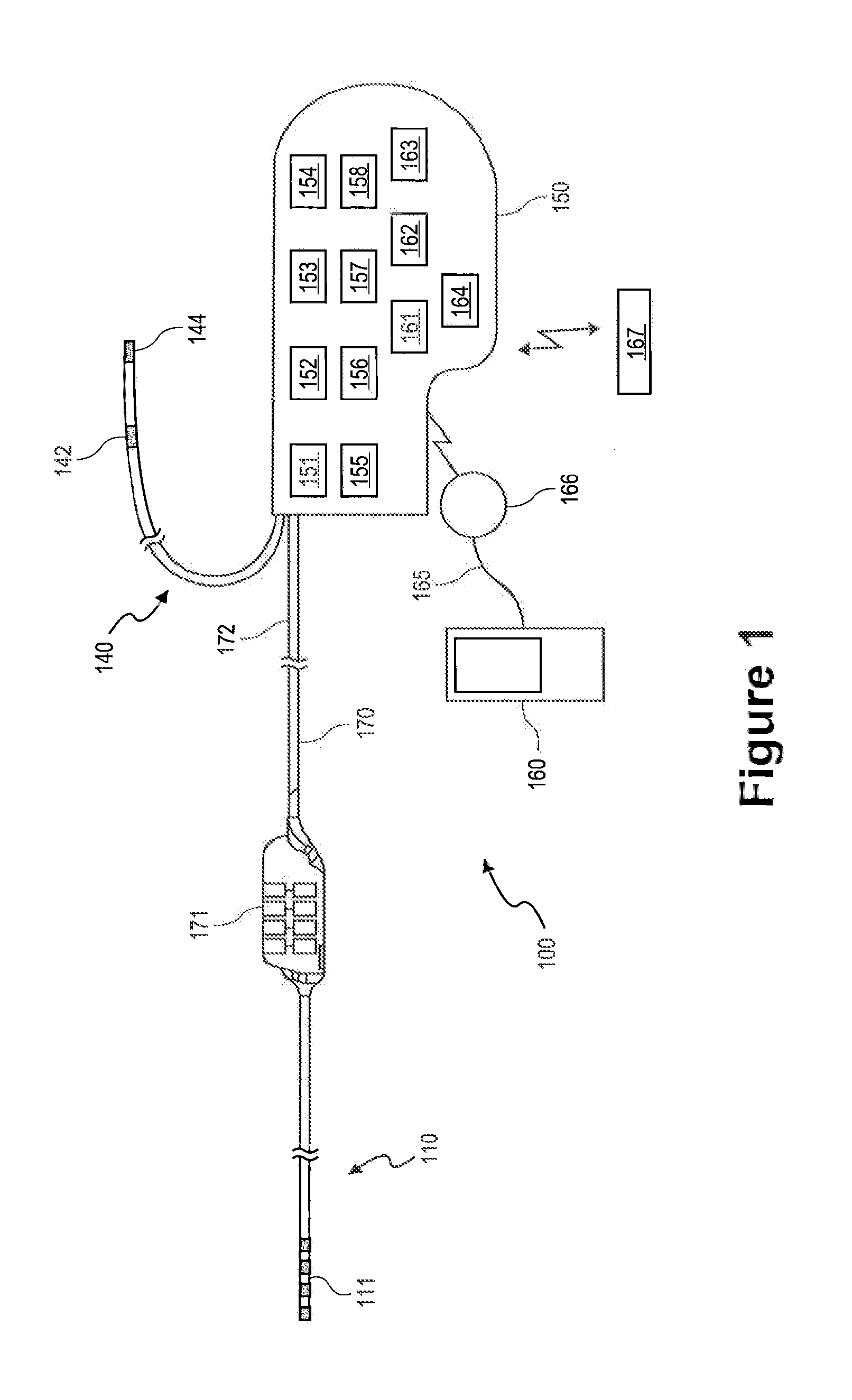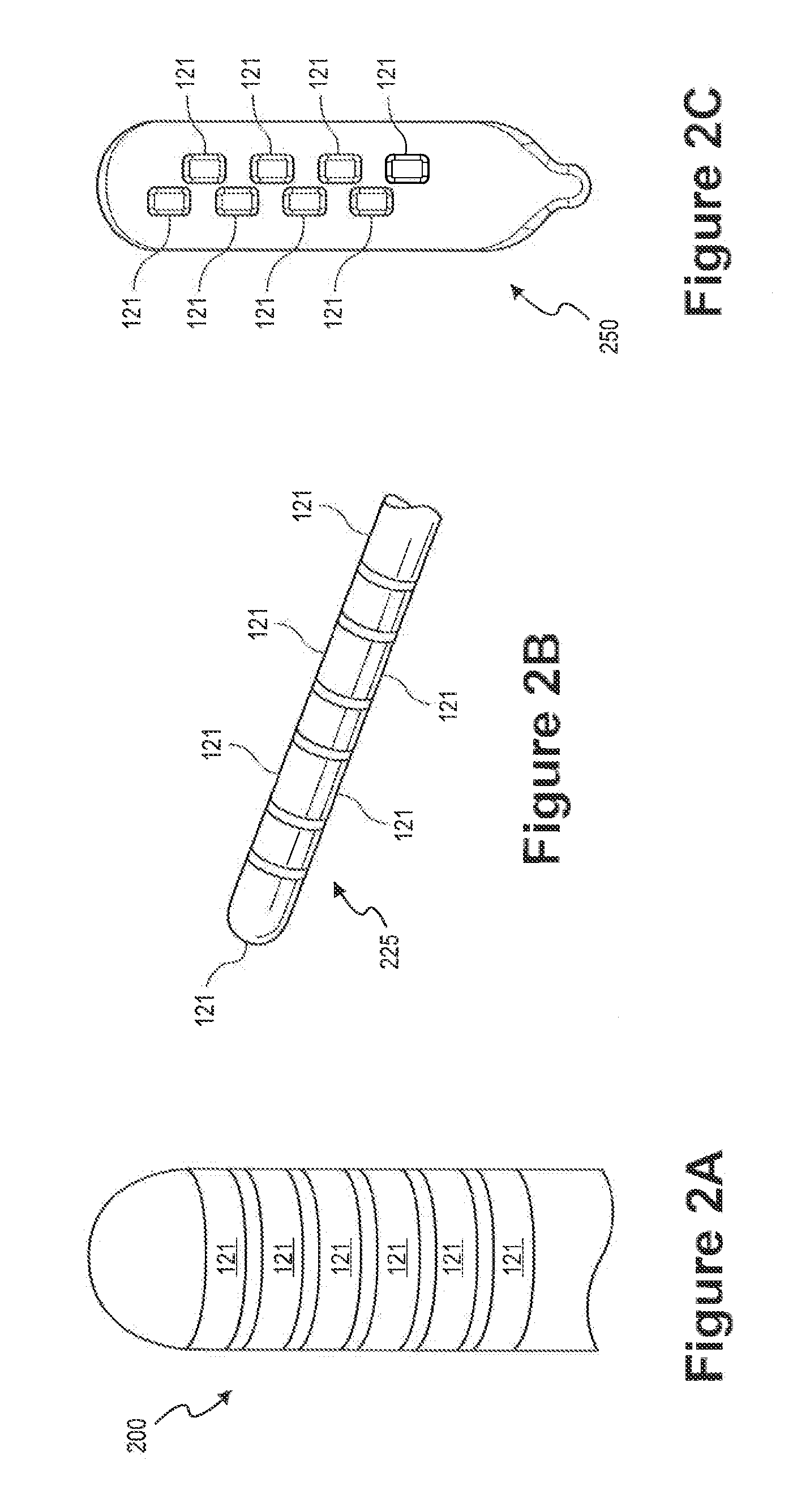Neurostimulation method and system to treat apnea
a technology of apnea and neurostimulation, applied in the field of neurostimulation systems and methods, can solve the problems of severely limiting sleep quality, patient may wake up suddenly and completely, and the therapy is uncomfortable and noisy, so as to increase and decrease the aet-ns therapy
- Summary
- Abstract
- Description
- Claims
- Application Information
AI Technical Summary
Benefits of technology
Problems solved by technology
Method used
Image
Examples
Embodiment Construction
[0024]Neurostimulation, such as spinal cord stimulation, can produce paresthesia that the patient experiences as a tingling sensation. This is typically seen as an undesirable side effect, but could also be used as a low level sensory stimulation to arouse a patient into light waking. This could help improve the sleep quality and quantity by delivering enough sensory stimulation to cause the patient to shift or stir and resume breathing, without leading to complete arousal in a struggle to breathe.
[0025]FIG. 1 depicts a neurological stimulation system 100 that generates electrical pulses for application to nervous tissue of a patient according to one embodiment. For example, system 100 may be adapted to stimulate spinal cord tissue, peripheral nerve tissue, deep brain tissue, cortical tissue, or any other nervous tissue within a patient's body.
[0026]System 100 includes an external or implantable NS device 150 that is adapted to generate electrical pulses for application to the nerve...
PUM
 Login to View More
Login to View More Abstract
Description
Claims
Application Information
 Login to View More
Login to View More - R&D
- Intellectual Property
- Life Sciences
- Materials
- Tech Scout
- Unparalleled Data Quality
- Higher Quality Content
- 60% Fewer Hallucinations
Browse by: Latest US Patents, China's latest patents, Technical Efficacy Thesaurus, Application Domain, Technology Topic, Popular Technical Reports.
© 2025 PatSnap. All rights reserved.Legal|Privacy policy|Modern Slavery Act Transparency Statement|Sitemap|About US| Contact US: help@patsnap.com



